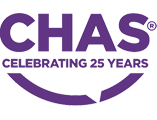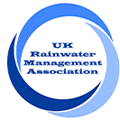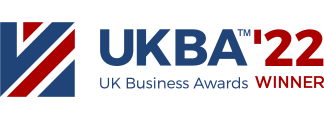Tips for Commercial Rainwater Harvesting
31/07/2023
There is currently a knowledge gap which exists within the construction industry surrounding rainwater harvesting technologies. As a result, rainwater harvesting systems are often completely value engineered out of a project, or replaced with a cheaper, substandard rainwater harvesting system which is supplied by a company who lacks experience with the technology.
This article can assist as an information guide to commercial rainwater harvesting. The blog will include tips and common mistakes to avoid from our experience over the past 20 years in the industry. We maintain all types of rainwater harvesting systems, not just our own meaning we know what works and we know what could work better.
Water is our most precious resource and a growing challenge for the built environment sector in the UK. Many are unaware of the problems the water industry is facing, particularly in areas of the Southeast of England where an extra one billion litres of water are going to be needed each day within the next 15 years, according to Water Resources Southeast.
Rainwater Harvesting is no longer a ‘nice to have’ in newly constructed buildings but a must-have for protecting potable water supplies. Rainwater Harvesting is proven to reduce potable water consumption and reduce discharge into the combined sewer network.
For those who do not know, commercial rainwater harvesting systems collect rainwater runoff from roof surfaces to be re-used within the building as a sustainable, non-potable water supply. When rainwater lands on a roof area, the water is clean and clear meaning little filtration is needed to provide a non-potable water supply for the building. Non-potable water supplies can be used for many common uses of water within a building, except for drinking, food preparation, and personal hygiene.
Rainwater Harvesting can provide a non-potable water supply for the following water uses;
Surface of collection: Rainwater Harvesting Systems offer the best water quality when rainwater is collected from common roofing materials, such as roof tiles and metal sheeting. Less conventional materials on the surface where rainwater is being collected from may cause lower levels of water quality.
Rainwater Harvesting Systems which collect from blue-green roofs may experience slight discolouration, but this can be overcome with an automatic dye system. Collecting from pedestrian areas and car parks should be used as a last resort if there is little roof space available on-site. TIP: In these scenarios, the rainwater harvesting system may require an oil separator prior to the rainwater entering the system.
Drainage: Rainwater can be collected through traditional gravity fed drainage and symphonic drainage systems. TIP: the syphon will need to be broken prior to the rainwater entering the rainwater harvesting system.
Rainwater Harvesting Systems utilise a pre-tank filter prior to rainwater entering the main storage tank. This mesh filter contains 1mm holes to allow rainwater to pass through which is free from leaves and other debris.
TIP: Stormsaver systems are supplied with a pre-tank filter combined in a turret of the main storage tank so the filter can be accessed from ground level for maintenance. Other systems may require confined space equipment if the pre-tank filter is not accessible from ground level, increasing the cost of maintenance.
The main storage tank of a rainwater harvesting system can be in an above or below ground arrangement. This is dependent on the site-specific requirements.
Capacity: Systems are sized on an 18-day storage period to make the most efficient use of local rainfall. TIP: Always check the nominal and actual capacity of the storage tank. Actual capacity calculations consider that rainwater cannot be stored in the connecting pipework area. This may require the size of the main storage tank to be larger.
Material: TIP: GRP or glass reinforced polyester is the preferred solution for below ground rainwater storage. TIP: Cheaper alternatives, such as plastic tanks, are difficult to repair if a crack occurs overtime. GRP can be easily repaired if the tank develops a crack. Our maintenance team have encountered many problems with plastic tanks which were supplied by unexperienced rainwater harvesting suppliers and are now unable to be repaired.
Submersible pump: A submersible pump is located in the base of the main storage tank. This should be connected to above ground rainwater pipework via black and green MDPE only. Black and green MDPE is the correct identifying pipework as stated by WRAS regulations. TIP: ensure straight lengths of MPDE pipework are connected to the submersible pumps. Coiled MDPE can cause the submersible pump to fall on to the base of the tank.
Rainwater Harvesting Systems are commonly supplied with cotton wound coil filters. Whilst these can achieve good levels of water quality, they are maintenance intensive for end users. It is recommended that the rainwater harvesting system be supplied with automatic backwashing to remove the need for intensive maintenance – a specialist supplier of rainwater harvesting systems will only be able to offer this feature!
Ultraviolet filtration – it is recommended where a fine vapour is created by the usage of the rainwater that a UV filtration system be installed. TIP: the UV filter should only be installed on the rainwater outlet. Some less experienced suppliers of rainwater harvesting have this pre-installed on the rainwater inlet which means UV filtration is ineffective as rainwater can be stored for an extended period of time before it is boosted to usage points.
All Rainwater Harvesting Systems have a control panel to control the filtration and movement of the rainwater around the system.
Control panels may be accompanied by a header/break tank arrangement where an automatic mains water top will be located in the event of a drought period. TIP: some cheaper rainwater harvesting systems have an insufficient capacity in the break tank which can result in frequent pump failures and a lack of supply to usage points.
Water Meters: the control panel will be connected to water meters. Stormsaver supply both a rainwater and a mains water meter to ensure both can be monitored for fault finding purposes.
Control Panel Quality: Stormsaver systems are supplied with a PLC control panel which offers ease of maintenance if a single component within the control panel were to fail. Alternative suppliers may offer a PCB arrangement which will require a complete replacement of a control panel in the event of a failure.
Enjoyed our blog on the tips of commercial rainwater harvesting? Stormsaver offer a free-of-charge CPD session on commercial rainwater harvesting systems for consultants, contractors, water companies and end users. Learn more about our approved CPD sessions here.

My role as a Water Reuse Specialist means I get to keep up to date with all things water conservation. My favourite water saving tip is to turn taps off when brushing your teeth! I think rainwater harvesting and the water reuse industry is exciting, and I love sharing updates with our customers. View Matt’s Stormsaver profile here.
Terms & Privacy Policy Cookie Policy Site Map
Copyright © 2024 Stormsaver Ltd. All Rights Reserved.





